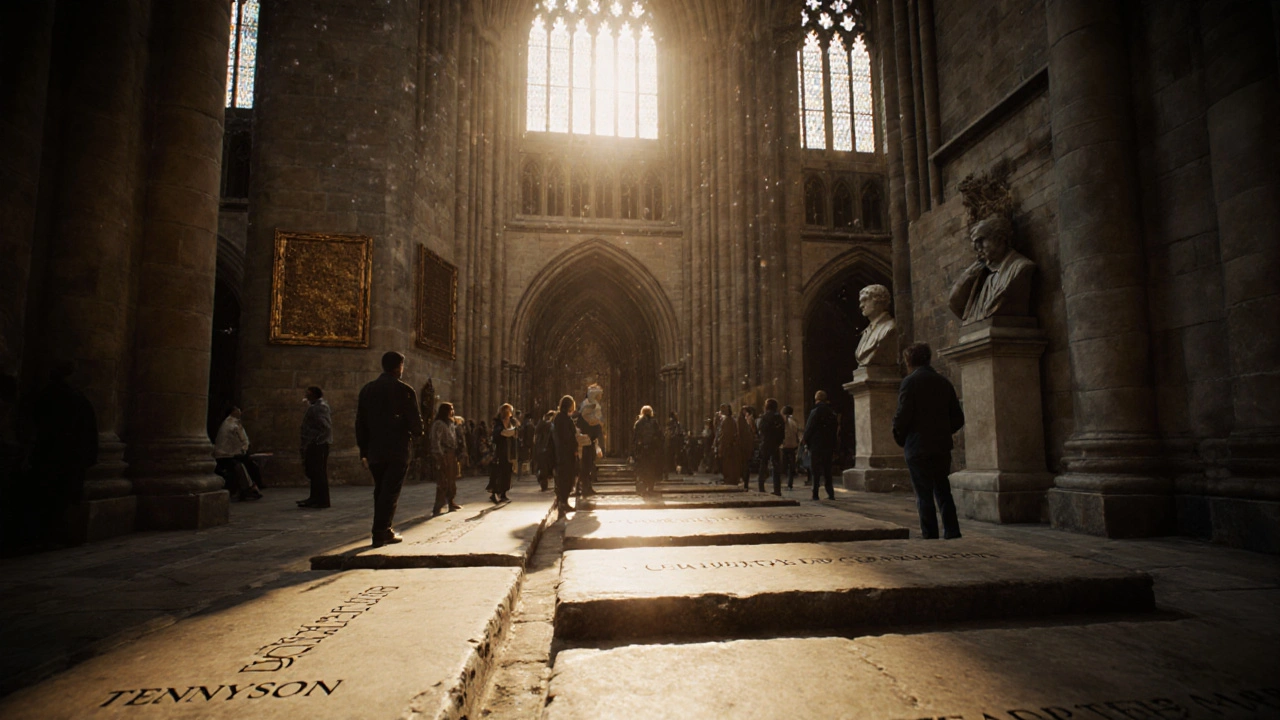Poet's Corner
When you walk into Poet's Corner, a sacred space in Westminster Abbey dedicated to honoring Britain’s most influential writers. Also known as Literary Corner, it’s not just a burial ground—it’s a living museum of language, where centuries of thought, protest, and beauty are carved into stone. This isn’t a tourist photo op. It’s where Chaucer, Dickens, Shakespeare, and Eliot still hold court, even if their bodies aren’t here. Some are buried beneath the floor. Others have plaques on the walls. A few, like Mary Wollstonecraft and George Eliot, were honored long after death, because the world finally caught up to them.
Poet's Corner isn’t just about poetry. It includes playwrights, novelists, satirists, and even journalists. Charles Dickens’ grave sits beside T.S. Eliot’s memorial. Rudyard Kipling’s name is carved near that of Alfred, Lord Tennyson. You’ll find Jane Austen’s memorial too, though she’s buried in Winchester. That’s the thing about Poet's Corner—it’s not about where someone was laid to rest. It’s about who shaped how we think, feel, and speak. The Abbey doesn’t just honor the dead. It keeps their voices alive.
What makes this place powerful is how quiet it is. While crowds flood the Abbey’s nave, Poet's Corner stays still. You can stand in front of Wordsworth’s stone and hear the echo of "I wandered lonely as a cloud." Or read the lines from Siegfried Sassoon and feel the weight of war. It’s not a theme park. It’s not a lecture hall. It’s a place where you come to remember that words have power—and that the people who wrote them refused to be forgotten.
Behind every name here is a story. Some were celebrated in their time. Others were ignored, banned, or mocked. But in this corner, they all have equal space. You’ll find the first woman writer honored here, the first Black poet, the first poet to write in modern English. And now, new names are added—not because they sold books, but because they changed how we see the world.
What you’ll find in the posts below isn’t just a list of names. It’s a guide to the writers who shaped London’s soul—the ones who wrote about its streets, its struggles, its secrets. From the poets who walked these same alleys to the novelists who turned its chaos into art, this collection connects you to the real voices behind the stones. You’ll learn where to find their hidden memorials, what they really wrote about, and why their words still matter today.
